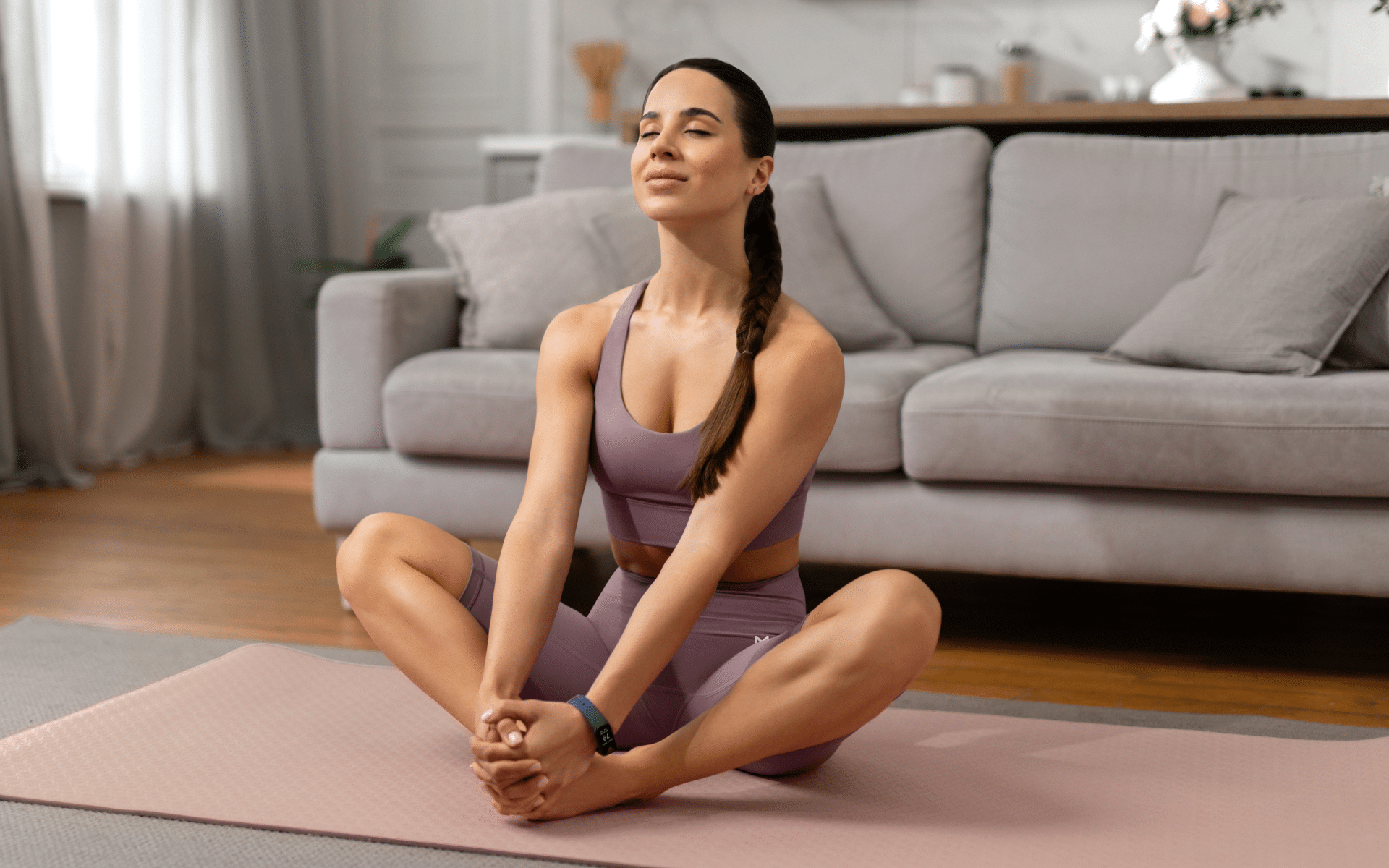Weight lifting, bodyweight training, and running can be effective fitness activities but unfortunately not applicable to anyone. Here is where Pilates rises above – a golden mean for all kinds of people: for those who lead a sedentary lifestyle, the professional athletes, the enthusiastic beginners, the pregnant women, the seniors and the younger ones, even those with anxiety. That’s what makes Pilates so attractive – this is the activity that suits every person, regardless of gender, sex, ability, or current fitness levels. Pilates includes specialized equipment exercises and mat variations. There are more than 600 exercises you can gradually implement into your daily routine, therefore, enhancing your flexibility and mobility, alleviating back pain or simply reducing the symptoms of depression. Depending on the fitness level, a person can do pilates once per week and even daily. This article covers the answer to the main question: how often should you do Pilates? Get fit with the best Pilates schedule.
How Many Times A Week Should You Do Pilates?
Pilates is an activity with versatile movements that help you get lean and strong without lifting heavy weights or debilitating high-intensity training.
It’s a low-impact workout created by Joseph Pilates which puts emphasis on your core. However, its major goal is to strengthen your core to develop functional and sustainable movement patterns throughout your body.
With Pilates, you can:
- Improve your balance (4).
- Promote flexibility and mobility.
- Increase energy.
- Decrease back pain.
- Improve posture.
- Reduce menstrual pain.
- Enhance sexual life by improving pelvic floor strength.
- Strengthen your bones and core.
- Promote better sleep.
Before you start to contemplate how many times you can do Pilates, you need to figure out your main goal. Maybe you desire to lose weight or strive to improve flexibility, or you simply aspire to use Pilates along with other types of training.
The second factor that affects how often you decide to do Pilates is your fitness level: beginners should not aim for more than 2-3 times of training per week while advanced athletes can go at it 4-5 times.
Read More: Does Pilates Build Muscle? The Facts And 3 Ways It Can Work
How Often Should You Do Pilates To Lose Weight?
Some people may find it impossible to lose weight without hitting calorie-burning cardio training. In reality, though, you can lose weight without necessarily sweating from the first few minutes of excruciating jumping movements.
Practicing Pilates regularly can aid in weight loss. Joseph Pilates thought it all through while creating the program. You can lose weight with Pilates since it improves your posture, balances your musculature, and promotes muscle tone (1). These things are important for you to look fit and healthy.
Combined with a healthy eating plan and aerobic activity, Pilates can speed up the process of weight loss.
Doing Pilates 3 times a week is enough to trim the fat and promote overall well-being.
Is It Bad To Do Pilates Everyday?
To answer this question, you need to pay attention to the following factors: Are you strong enough? Do you have enough time? What is your goal?
Being a low-impact activity, Pilates can be done every day but it has its downsides:
- You may get bored. Coming up with versatile movements every day can become tedious. Even though there are more than 600 exercises, there is little chance you can do all of them, particularly without special equipment.
- You can get overtrained. Pilates too often can lead to overtraining syndrome. It appears due to the lack of rest days between your working out. Excessive training may decrease athletic performance and your muscle soreness might become more intense than usual (5).
That said, it’s not advisable to practice Pilates daily. Still, if you decide to do Pilates every day you should make your workouts balanced and versatile. For instance, one day you may focus on your core and the other day work on the lower part of your body.
Before incorporating Pilates into your daily routine, contact your physician and ask for the essential guidelines.
Looking for a way to break the vicious cycle of weight loss and tone up all the jiggly parts? Watch the extra pounds fly off and your muscles firm up with the BetterMe app!
How Long Should I Do Pilates To Lose Weight?
One of the main reasons why people incorporate Pilates into their sports routine is weight loss. Still, Pilates is not as effective in fat-burning as running or swimming but it helps you build up a fitness routine and stick to it on a regular basis.
One small study in 2017 observed overweight women ages 30 to 50 who took Pilates classes for eight weeks.
The study showed the following results:
- weight loss
- lowering BMI
- waist toning
- decreasing abdomen and hip circumference
The results depend on the person’s fitness level, endurance, and weight. On average, experiencing Pilates 2 times a week can bring the desired results.
Please note, that it’s impossible to achieve your weight goals without caloric deficiency, healthy dieting, and other cardio activities, such as swimming, riding a bike, or running. Pilates along with the following points can help you lose weight within the first 2 months.
Besides, you can try more advanced Pilates classes as you get stronger. Examples are: Pilates reformer classes and combination classes like Piloxing (Pilates and boxing) or Yogalates (yoga and Pilates.) You’ll burn more calories in these types of classes along with strength training sessions and cardio exercise.
To sum up, incorporating advanced Pilates classes 2-3 times a week (if you’re an advanced athlete) with cardio, strength training, and a balanced diet can positively influence your weight changes within the first 2 months.
How Many Calories Can I Burn Doing Pilates?
The difficulty of Pilates training impacts your calorie burning. For example, if you weigh about 150 pounds, you can burn approximately 175 calories in one 50-minute Pilates mat class at a beginner level. But if you decide to switch to an advanced 50-minute class, you can burn approximately 254 calories.
Additionally, the Pilates reformer class where you elevate your heart rate helps you burn more calories. Subsequently, the more challenging you make your classes the better and faster results you get.
Read More: Barre Vs Pilates: Which Is Right For You?
Does Pilates Once A Week Help?
Doing Pilates once per week is better than doing nothing. If this explanation is too simple for you then check out the study where young sedentary women were doing Pilates once a week. After only a 10-week period women highlighted improvements in their flexibility, balance, core, and abdominal muscle strength, body awareness, and skeletal muscle mass.
This demonstrates how your scheduled training (even once a week) can positively impact your physique and well-being.
Besides, doing Pilates regularly can alleviate back pain. That’s why if you belong to the group who leads a sedentary life, doing Pilates can help you get rid of the back pain which is an inevitable symptom of constant sitting.
What Are The Benefits Of 20-Minute Pilates?
20 minutes of Pilates per day is an excellent starting point for beginners or individuals who want to work out daily. Since it’s a low-impact activity, you can do it every day and 20 minutes is enough to enhance upper-body mobility and increase overall flexibility.
Plus, Pilates classes are safe for people with achy joints. Yet, it’s better to consult a doctor before trying out this activity especially when you suffer from any chronic condition.
If you tend to let yourself off the hook, raise the white flag when things get tougher than you expected, send yourself on an unconscious binge-eating trip – BetterMe app is here to help you leave all of these sabotaging habits in the past!
Can Pilates Change Your Body Shape?
Regular Pilates classes can alter your body shape via toning and focus on alignment and improving posture. People who practice Pilates every week eventually end up with a slimmer appearance. However, you can accelerate the changes by incorporating other strenuous activities or cardio workouts. Plus, a balanced diet is a must-point on this list. Only by making healthy choices can your body shape changes speed up.
The Bottom Line
Pilates is a low-impact body exercise developed in the 20th century by Joseph Pilates. It’s a system of repetitive exercises performed either on a yoga mat or other equipment to promote stability, strength, and flexibility. Pilates classes are open to all kinds of people who want to improve posture, balance, and body flexibility. The optimal range of Pilates classes is 3-4 times a week. Beginners can aim for 2 times. Still, you should see results even by practicing Pilates once a week. Combining it with cardio or high-intensity training can help you lose weight and alter your body shape. Although doing Pilates daily can lead to overtraining, short Pilates sessions (20 minutes or less) will not impair your health. In this article you have learned the answer to the main question: how often should you do Pilates? Get fit with the best Pilates schedule and start your Pilates training today. You are advised to consult a physician before incorporating Pilates into your training routine.
DISCLAIMER:
This article is intended for general informational purposes only and does not serve to address individual circumstances. It is not a substitute for professional advice or help and should not be relied on for making any kind of decision-making. Any action taken as a direct or indirect result of the information in this article is entirely at your own risk and is your sole responsibility.
BetterMe, its content staff, and its medical advisors accept no responsibility for inaccuracies, errors, misstatements, inconsistencies, or omissions and specifically disclaim any liability, loss or risk, personal, professional or otherwise, which may be incurred as a consequence, directly or indirectly, of the use and/or application of any content.
You should always seek the advice of your physician or other qualified health provider with any questions you may have regarding a medical condition or your specific situation. Never disregard professional medical advice or delay seeking it because of BetterMe content. If you suspect or think you may have a medical emergency, call your doctor.
SOURCES:
- Effects of Pilates on muscle strength, postural balance and quality of life of older adults: a randomized, controlled, clinical trial (2015, jstage.jst.go.jp)
- Physical and psychological benefits of once-a-week Pilates exercises in young sedentary women: A 10-week longitudinal study (2016, sciencedirect.com)
- The effect of Pilates exercise on body composition in sedentary overweight and obese women (2016, .ncbi.nlm.nih.gov)
- The Effects of Pilates Mat Exercise on the Balance Ability of Elderly Females (2014, ncbi.nlm.nih.gov)
- What to Know About Overtraining (2021, webmd.com)















